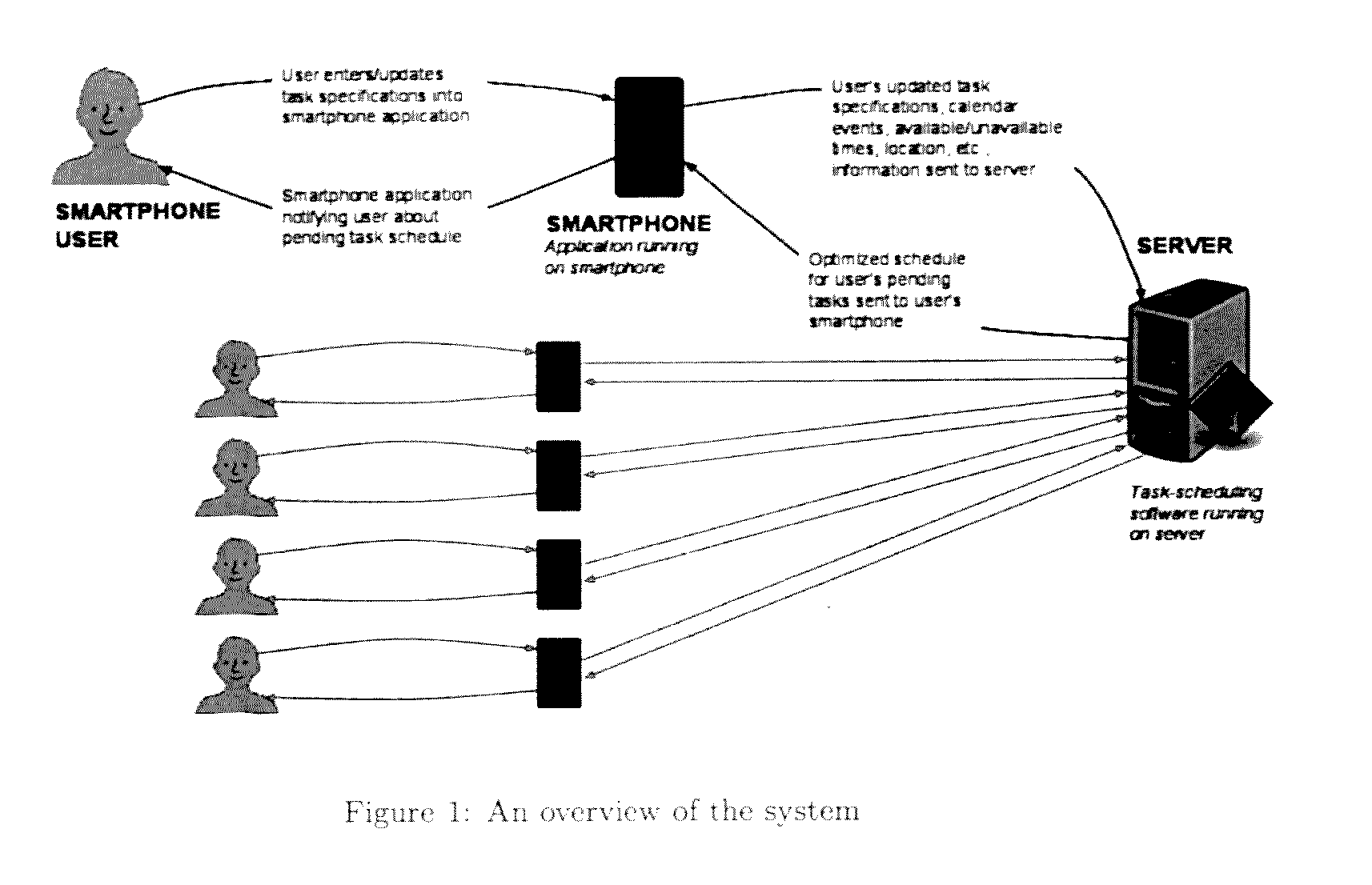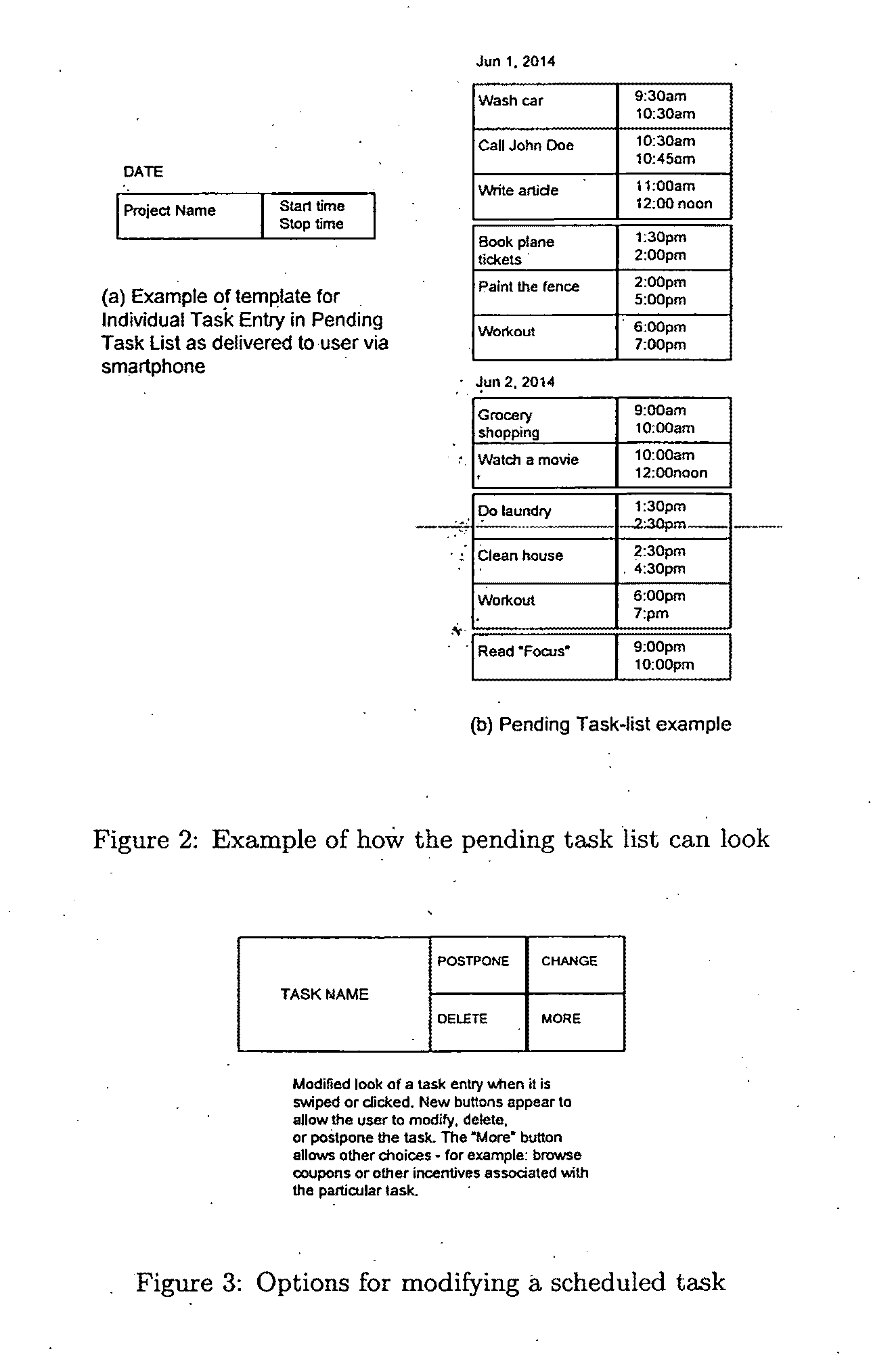System and Method for Automated Optimized Personal Task Scheduling and Targeted Advertising
a technology of personalized task scheduling and personalized advertising, applied in the field of personal tasklist management, can solve the problems of slow algorithms, heuristic-based algorithms, and increased computational costs
- Summary
- Abstract
- Description
- Claims
- Application Information
AI Technical Summary
Benefits of technology
Problems solved by technology
Method used
Image
Examples
Embodiment Construction
[0016]To assist in describing the present invention, an explanation of the problem formulation is first provided.
9.1 PROBLEM FORMULATION
[0017]The present invention addresses the problem of personal task scheduling (or task scheduling from a to-do-list) by means of a mobile phone application. At any time, a task-list may include many individual tasks and the list may change frequently as some tasks get done or new tasks get added to it, or various attributes of existing tasks are modified. The attributes of each task can include such things as estimated time-effort (or estimated man-hours), start-time, stop-time (deadline), perceived difficulty (or required focus level), importance or priority level, minimum-size of subtask time, maximum-size of subtask time, preferred day-of-week, preferred time-of-day, task recurrence (e.g. weekly or monthly), preferred location (home, work, gym, store, park, car, etc.). The available time for scheduling tasks from the list is any time excluding th...
PUM
 Login to View More
Login to View More Abstract
Description
Claims
Application Information
 Login to View More
Login to View More - R&D
- Intellectual Property
- Life Sciences
- Materials
- Tech Scout
- Unparalleled Data Quality
- Higher Quality Content
- 60% Fewer Hallucinations
Browse by: Latest US Patents, China's latest patents, Technical Efficacy Thesaurus, Application Domain, Technology Topic, Popular Technical Reports.
© 2025 PatSnap. All rights reserved.Legal|Privacy policy|Modern Slavery Act Transparency Statement|Sitemap|About US| Contact US: help@patsnap.com



